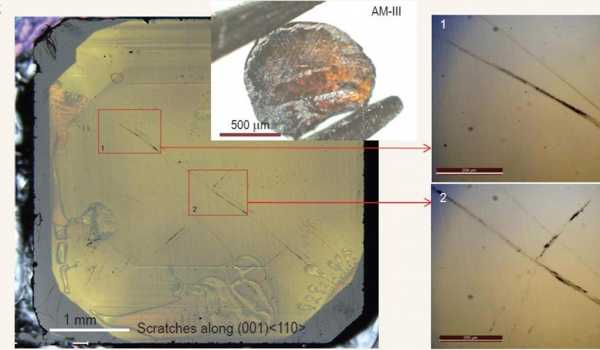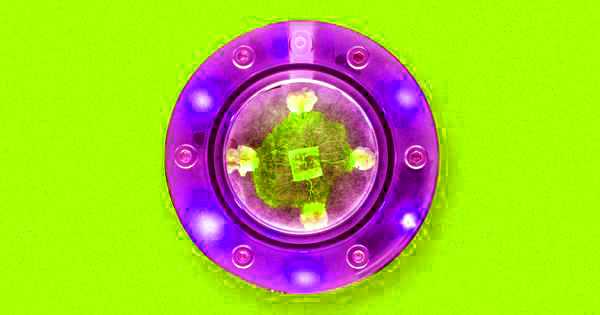An international team of scientists led by researchers from China’s Yanshan University discovered that their creation, dubbed AM-III, is roughly as hard as diamonds and far more durable than most other materials. Aside from being an impressive engineering feat in and of itself, The Independent reports that the ultra-hard glass has the right properties to make stronger solar panels and other semiconductors, potentially adding a new tool in the push to clean up our energy infrastructure.
Using a diamond to cut glass is nothing new, but a team of researchers in northern China recently developed the world’s hardest glassy material, which can easily leave a deep scratch on the surface of a diamond. In a Vickers hardness test, the (tentatively named) AM-III, a transparent, slightly yellowish material made entirely of carbon, reached 113 giga pascals (GPa). In comparison, a natural diamond stone typically scores between 50 and 70 GPa, with some man-made pieces exceeding 100 GPa.
Though mass production could take years and the cost is unlikely to be low, a bulletproof window made with the AM-III could be 20 to 100 times stronger than some mainstream products currently in use.
Researchers have created a new kind of glass that, thanks to an intense manufacturing process and a bizarre chemical structure, they say is just about as hard as natural diamonds.
“As a result, our measurements show that the AM-III material is comparable to diamond in strength and superior to the other known strongest materials,” the researchers wrote in their study, which was published last week in the journal National Science Review.
The transparent material, tentatively dubbed AM-III, is expected to find widespread use in the high-tech industry. AM-III is a semiconductor that can transfer electric current and is nearly as efficient as silicon.
The glassy material may not be as appealing as jewelry, but it has a wide range of applications in the high-tech industry, according to researchers. The AM-III, for example, is a semiconductor that is nearly as efficient as silicon. Because of its ability to transfer electric current at will, it is an excellent candidate for use in photoelectric devices, including weapons, that must operate in harsh environments such as high pressure and temperatures.

Disordered Arrangement
The unusual hardiness of AM-III, when compared to the crystal lattice of a diamond, is due to a pinch of disorder at the molecular level, according to The Independent. The researchers began with hollow, ovoidal carbon molecules known as fullerenes, which they then heated and crushed for hours under intense pressure. However, if they went too far with the process and pushed the carbon into an overly organized arrangement, the glass would weaken and lose its semiconducting properties.
According to the study, the end result was a glass that scored higher than natural diamonds on a hardness test and could easily scratch a diamond’s surface — an incredible achievement for a material that we typically associate with shattering.
A diamond is a type of crystal. Atoms and molecules line up in perfect order and direction in crystals. However, if there are multiple orders and directions, the internal structure becomes a jumble and the material becomes glass.
Glass is, in general, brittle. According to Tian and colleagues, the AM-III is not strictly a piece of glass, but rather a glass with crystals inside. The most detailed structures of the material appeared in order under a microscope, just like crystals. However, zooming out would turn the image into a jumbled mess resembling countless worms frozen in a dish.
The researchers discovered that this combination of order and disorder could give a material some unusual properties. They created a plethora of new materials with various order-disorder combinations. In order to achieve the greatest strength, the AM-III had the highest proportion of atoms and molecules.
Many strong materials have been developed by scientists. In theory, graphene can withstand pressures of up to 400 GPa. However, such strength exists only when the material is one atom thick. Many layers of graphene stacked together would result in soft, ordinary graphite. As a result, many super-hard materials’ applications were limited to a thin coating on the surface of another material.
However, the AM-III can be manufactured in a variety of shapes and sizes. Moreover, unlike diamond, which has some weak surfaces due to the unique alignment of its atoms, the AM-III is hard all the way around. According to the researchers, these properties will increase the potential of its applications.














